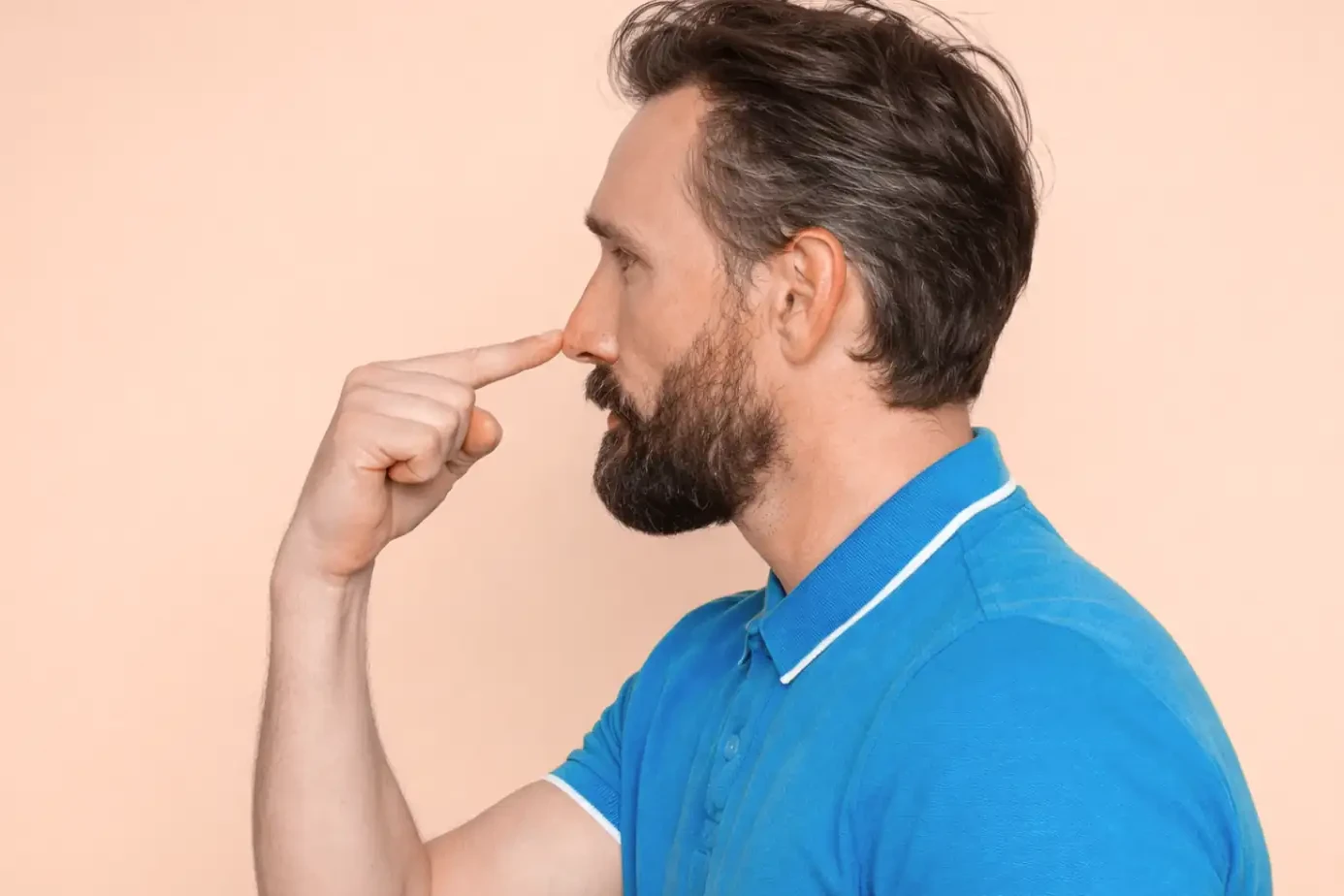Muscular dystrophy is a set of genetic diseases that make your skeletal muscles weaker over time. There are more than 30 types of muscular dystrophy. Each type has its specific symptoms and gets worse at its own pace.
Muscular dystrophy means your muscles get weaker and lose function gradually.
Knowing the symptoms of muscular dystrophy is vital for early detection and right management. Types like Duchenne and Becker are more common. Others are less known, bringing their unique difficulties.
Each kind needs a specific plan for treatment.
Table of Contents
ToggleOverview of Muscular Dystrophy
Muscular dystrophy is not just one illness but over 30. Each one leads to muscle weakness and other symptoms. They slowly make the muscles weaker, so over time, it’s hard for the body to work properly.
Definition and Types
The term ‘muscular dystrophy’ covers many types. For example, there’s Duchenne MD, which is common, and Becker MD, which is less severe. What stands out is how each type starts at different ages and affects various muscles.
Progressive Nature of the Disease
They may all vary, but one thing they share is getting worse over time. This gets in the way of how well someone can do things alone. It changes their life significantly as time goes by.
Common Muscular Dystrophy Symptoms
Progressive muscle weakness is the main sign of muscular dystrophy. Over time, the muscles lose their strength. This makes it hard to do daily tasks and move around.
Progressive Muscle Weakness
The muscles weakening slowly is a key symptom. With muscular dystrophy, muscle fibers break down. They are then replaced by fibrous and fatty tissue. This makes it tough to lift things, climb stairs, or walk.
Muscle Mass Loss
People with muscular dystrophy often lose muscle mass. This is called muscle atrophy. The affected muscles look smaller and thinner. They might even be replaced by fat and connective tissue.
Frequent Falls and Clumsiness
With their muscles getting weaker, balance and coordination suffer. This can lead to falling often and feeling clumsy. Daily tasks become hard and the risk of injury goes up.
Muscular Dystrophy Symptoms in Children
Muscular dystrophy often shows up in early childhood. Kids who have it might be slow to sit, stand, walk, or move like other kids their age. This can be pretty noticeable as they miss milestones.
Delayed Motor Development
Kids with muscular dystrophy might not sit, stand, or walk when expected. They fall behind other kids their age significantly. It’s often the first clear sign that something is wrong.
Difficulty Walking and Running
As the disease keeps getting worse, children find it harder to walk and run. They might fall a lot. You could notice they walk in a funny way or can’t do physical activities like before.
Enlarged Calf Muscles
A big sign of muscular dystrophy can be larger calf muscles. But this doesn’t mean they’re strong. It’s because muscle is replaced with fat, making them look bigger than they should.
Duchenne Muscular Dystrophy Symptoms
Duchenne muscular dystrophy (DMD) is a severe type of muscle condition. It happens mostly in young boys. Signs of DMD start showing early in life, many times before the age of 5.
Early Childhood Onset
DMD shows up early, usually in a child’s first years. It mainly affects boys, but girls can carry the gene too.
Waddling Gait
Kids with DMD can start walking in a waddling way. They’ll stand with their feet wide apart, find it tough to lift their feet. This happens as the muscles in their hips, thighs, and calves get weaker.
Cognitive and Behavioral Issues
Beyond physical signs, DMD can cause thinking and behavior challenges. About a third of boys with DMD face some learning issues. This can affect how they pay attention, remember, and connect with others.
Becker Muscular Dystrophy Symptoms
Becker muscular dystrophy (BMD) is a form of muscular dystrophy that’s less severe than Duchenne. The symptoms show up later in life, often in the teenage years or early adulthood. This is different from Duchenne which starts in early childhood.
Later Onset than Duchenne
Unlike Duchenne, BMD’s signs first appear later, sometimes not until the mid-20s or beyond. This makes one of the main differences between the two types of muscular dystrophy. People with BMD might not show symptoms until their teenage years or even into adulthood.
Milder Progression
Becker muscular dystrophy progresses more slowly and is not as severe as Duchenne. Folks with BMD sometimes keep walking for a longer time. They might not face as intense muscle weakness and degeneration as those with Duchenne.
Congenital Muscular Dystrophy Symptoms
Congenital muscular dystrophy is a group of disorders noticeable at birth or by age 2. They affect boys and girls differently. Muscle weakness varies based on the disorder.
Present at Birth or Before Age 2
Unlike some types that show up later, symptoms of congenital muscular dystrophy are clear from the start. This affects a child’s development and how they can move.
Restricted Motor Function
Congenital muscular dystrophy limits how muscles work. Kids might have trouble sitting, standing, or walking. This makes everyday tasks and moving around hard for them.

Distal Muscular Dystrophy Symptoms
Distal muscular dystrophy, or distal myopathy, affects specific muscles in the body. These are the muscles far from the shoulders and hips. For example, it targets the muscles in the hands and feet. This makes it different from other forms of the disease. Distal muscular dystrophy has unique symptoms.
Distal Muscle Weakness
One key sign of this illness is weak muscles in the hands and feet. It starts here, affecting activities like holding things and keeping steady. Later, it may hurt the ability to move your hands and walk. This gets worse as the illness moves on.
Difficulty with Fine Motor Skills
Distal muscle weakness really hits fine tasks. Just grabbing things, buttoning a shirt, or using a fork can get tough. And as the illness gets worse, this can make life harder. People may feel less able to do things on their own, affecting how they live.
Muscular Dystrophy Symptoms in Adults
Muscular dystrophy is often linked to childhood. Yet, some types show up in adulthood. Adults with this condition face symptoms that start slowly and change over time. This is different from how it leaps in children.
Gradual Onset
In adults, muscular dystrophy slowly weakens the muscles over time. At first, you might not notice the signs. But as it develops, it becomes harder to do everyday things.
Varying Severity
The effects of muscular dystrophy vary from person to person. Some feel a slight impact, while for others, it’s more severe. This depends on the specific gene changes and how quickly it progresses.

Respiratory and Cardiac Muscular Dystrophy Symptoms
Many types of muscular dystrophy can impact how the heart and lungs work. This can change a person’s health and life quality a lot.
Breathing Difficulties
Muscular dystrophy makes the breathing muscles weaker over time. So, those with this disease might find it hard to take deep breaths. They might also feel like they can’t catch their breath easily. Plus, they’re more prone to getting lung infections.
These problems get worse as time goes on. People might need machines to help them breathe better, like ventilators or BiPAP.
Heart Problems
Duchenne and Becker muscular dystrophies can make the heart muscle weak. This is also called cardiac muscular dystrophy. It can lead to heartbeat issues, weak heart muscles, and even heart failure.
People with muscular dystrophy need to keep a close watch on their heart health. They might need special care to avoid serious heart problems.
Diagnosing Muscular Dystrophy Symptoms
Diagnosing muscular dystrophy involves many steps. It starts with a physical exam and looking at your medical history. Genetic testing and other tests may also be part of the process. This detailed approach helps figure out which type of muscular dystrophy you have. It also guides healthcare providers in making a treatment plan just for you.
Physical Examination
The first thing doctors do is a careful physical exam. They check your muscle strength, reflexes, and how well you move. They’ll also look for signs like muscle shrinking or poor muscle tone. These are common in muscular dystrophy.
Genetic Testing
Genetic testing plays a big part in diagnosis. It looks at your DNA to find specific changes or faults. Knowing these details confirms the disease. Plus, it helps in figuring out what type of muscular dystrophy it is. This is crucial for treatment and managing the disease.
Other Diagnostic Tests
Other tests may be used along with the physical exam and genetic testing. For example, you might get a muscle biopsy. This looks at a tiny piece of muscle under a microscope. It shows how your muscle fibers are doing.
- Electromyography (EMG): Records the electrical activity in your muscles. It can show patterns linked with muscular dystrophy.
- Magnetic resonance imaging (MRI): Gives detailed pictures of your muscles. It can find any issues in their structure or how they work.
- Blood tests: These can measure creatine kinase levels. High levels can point to muscle damage from muscular dystrophy.
Putting all these tests together helps diagnose muscular dystrophy accurately. It tells doctors the type you have. Then, they can plan a treatment that considers your specific needs.
Conclusion
Muscular dystrophy is a group of genetic disorders affecting the muscles. It varies in symptoms and progression but always leads to a loss of muscle function. This challenges both children and adults with these conditions.
Diagnosis and treatment are crucial to help those affected. With the help of genetic testing, we now understand more about these diseases. This allows for better care tailored to the individual.
The fight against muscular dystrophy is ongoing. Research and clinical trials look for new treatments and maybe a cure. Through awareness and teamwork, we can make life better for those with muscular dystrophy. We can also offer hope for a future without it.
FAQ
What is muscular dystrophy?
Muscular dystrophy is a group of genetic diseases that weaken and break down muscles over time. There are over 30 types, each with its own signs and progress.
What are the main symptoms of muscular dystrophy?
The key symptom is a steady muscle weakness. People with this condition gradually lose strength and function in their muscles.
When do the symptoms of muscular dystrophy typically appear?
Signs often show in early childhood as kids miss motor skill milestones. This leads to delays in sitting, standing, walking, or other movements.
What is Duchenne muscular dystrophy?
Duchenne muscular dystrophy (DMD) is a common, severe type hitting mostly boys. Kids usually show signs before turning 5.
How does Becker muscular dystrophy differ from Duchenne?
Becker muscular dystrophy (BMD) is similar but less intense than Duchenne. Its signs come later, during teens or early adulthood, unlike Duchenne that starts in childhood.
What is congenital muscular dystrophy?
This type affects babies or toddlers, before they turn 2. Its symptoms and how they progress vary widely, based on the specific type.
What is distal muscular dystrophy?
Distal muscular dystrophy mainly weakens muscles far from the body’s core. These include forearms, hands, lower legs, and feet.
Can muscular dystrophy also affect the respiratory and cardiac systems?
Definitely. It’s common for muscular dystrophy to impact both breathing and heart health, in addition to muscle issues.
How is muscular dystrophy diagnosed?
Doctors use physical exams, medical history, genetic tests, and specific diagnostic tests to diagnose this condition.
Source Links
- https://www.mayoclinic.org/diseases-conditions/muscular-dystrophy/symptoms-causes/syc-20375388
- https://www.ninds.nih.gov/health-information/disorders/muscular-dystrophy
- https://www.webmd.com/children/what-is-muscular-dystrophy
- https://www.childrens.com/specialties-services/conditions/muscular-dystrophy
- https://www.mda.org/disease/duchenne-muscular-dystrophy/signs-and-symptoms
- https://www.hopkinsmedicine.org/health/conditions-and-diseases/becker-muscular-dystrophy
- https://www.mountsinai.org/health-library/diseases-conditions/becker-muscular-dystrophy
- https://rarediseases.org/rare-diseases/congenital-muscular-dystrophy/
- https://www.musculardystrophyuk.org/conditions/a-z/congenital-muscular-dystrophy/
- https://www.cedars-sinai.org/health-library/diseases-and-conditions/d/distal-muscular-dystrophy.html
- https://medlineplus.gov/musculardystrophy.html
- https://www.ncbi.nlm.nih.gov/books/NBK560582/
About The Author

This article is medically reviewed by Dr. Chandril Chugh, Board-Certified Neurologist, providing expert insights and reliable health information.
Dr. Chandril Chugh is a U.S.-trained neurologist with over a decade of experience. Known for his compassionate care, he specializes in treating neurological conditions such as migraines, epilepsy, and Parkinson’s disease. Dr. Chugh is highly regarded for his patient-centered approach and dedication to providing personalized care.
→ Book a consultation to discover which remedies suit your needs best.




